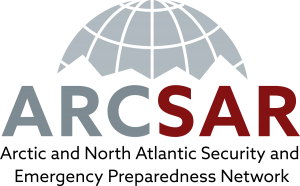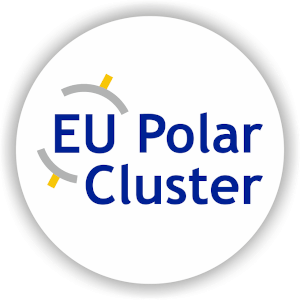The Arctic Ocean is at the centre of the Arctic and Northern Atlantic region and is bordered to the south by the North Atlantic Ocean. The Arctic Ocean is bounded by 8 different countries; Norway, Iceland, Finland, Sweden, Denmark, Canada, United States, and Russia.
It contains a number of islands which include smaller landmasses such as Bear Island (NO), the Spitzbergen archipelago (NO), Ellesmere Island (CAN), Novaya Zemlya (RUS) and many more, with Greenland (DEN) being the largest of these Islands.
The Arctic region is a unique area among Earth’s ecosystems. At the pole, we find ice coverage the size of which changes from year to year dependent upon climactic variations. The region acts as a regulator of the earth’s climate, and in recent decades the Arctic has been warming at almost twice the global average rate.
The Atlantic Region stretches from the United Kingdom and Ireland down to the northern shores of Spain and Portugal, encompassing all of the Netherlands and parts of Germany, Denmark, Belgium and France. The North Atlantic is one of the richest oceans in the world, but it is also one of the most heavily used. Together, the Arctic and Northern Atlantic region (ANA) is characterised by presence of economically important marine activities and infrastructure, sparse to high-density population areas, challenging marine conditions, inhospitable landscapes, diverse and often extreme climates, and ocean areas bordered by cliffs, fjords and mountains which are difficult to access.
The ANA region has traditionally been important in terms of fisheries and fisheries-related activities. Increasingly, the region is experiencing more attention, resulting in greater traffic, and increased human activity. This stems from a number of factors including but not limited to increased tourism, fishing, and the presence of fossil fuels. Different types of vessels in the region include: tourism related vessels, transport vessels such as liquefied natural gas (LNG) and oil tankers, bulk ships and container vessels, offshore service and exploration vessels, research vessels and naval fleet vessels including submarines. The increase in cruise vessel traffic is one of the key concerns for many Arctic countries, especially as such vessels are growing in size, numbers of passengers are increasing, and shrinking sea ice is opening up the Northwest Passage. Cruise ships regularly take passengers to see Polar Bears, Seals and the Northern Lights, and there has been a 36% increase in the last 2 years in the Artic region alone.
In terms of fishing, the Arctic ocean is home to one of the few sustainable and highly valuable cod stocks left in the world and houses exciting new species such as the King crab. Activity which was once seasonal in the region is now seen all year round. New technological innovations and vessel design offer icebreaking capacity to cargo ships, cruise vessels and research vessels extending their operational season and activity beyond the usual range. Oil and gas installations in the region will gain greater importance in the next 20-50 years, representing important energy resources. There are uncharted and highly lucrative oil reserves to feed the still increasing demand for fossil fuels. The region is now a highly important economic trade route with increasing infrastructure. New shipping routes are opening up due to changes in the ice coverage, providing new routes for the transport of goods from east to west. The Northwest Passage is still the most lucrative shipping lane in the Arctic.
Experts estimate that shipping time may be cut by 40% if the Northwest and Northeast passages were ice-free all year. These deep-water shipping lanes also allow for larger, heavier ships than the Panama Canal, which would increase trade, profit, and activity even further.
It is widely acknowledged that seaborne disasters and security threats will result from the opening of the Northern passages, and increasing operations in the ANA region, urgently requiring more open cooperation amongst governments, industry, and security organisations across many jurisdictions. Transnational maritime threats include territorial disputes and armed conflicts, piracy, terrorism, collisions and accidents, natural disasters and climate change, and pollution and environmental impacts.
Attacks on significant infrastructure like oil and gas supplies within the Arctic and North Atlantic oceans would have economic ramifications and far-reaching consequences for the EU and the rest of the world. A major fire on a large cruise ship in the Arctic, for example, could result in significant loss of life.
Key challenges for Search and Rescue (SAR) operations in the ANA region include long distances, severe weather, ice and cold conditions, a poor communications network, lack of infrastructure and limited resources. In addition, the limited capacity to host patients, the need for coordinated situational awareness, and the need for specialized evacuation and survival equipment pose major challenges for maritime safety and SAR in the Arctic. Increased traffic on transpolar shipping routes expected in the near future, could prove a big challenge for the communications infrastructure. Communications satellites operating in geostationary Earth orbit do not cover the area of the Arctic. Even when a link can be made, it can be prone to interruption from icing on antennas, or from disruption caused by heavy seas.
Arctic and North Atlantic Security and Emergency Preparedness Network (ARCSAR)
The ARCSAR project started 1st of September 2018 and it is comprised of 20 partners from 12 different countries: Norway, Iceland, Faeroes, United Kingdom, United States, New Zealand, Canada, Germany, Finland, Sweden, Ireland and Italy, with a raising number of associated partners as the project progresses.
ARCSAR is the first project of its kind to establish an international network that brings together in cooperation search and rescue practitioners, authorities, industry and academia and other organizations in order to identify gaps and opportunities and develop further capabilities to face the increasing demands in the Arctic and North Atlantic region.
The project will establish international best practice and propose innovation platforms for the professional security and emergency response institutions in the Arctic and the North-Atlantic. The focus is on increased interaction in targeted networks between the professional institutions, academia and the innovators in the preparedness service and equipment industry.
The ARCSAR project will monitor research and innovation projects and recommend the uptake and the industrialization of results, express common requirements as regards innovations that could fill in capability and other gaps and improve their performance in the future, and indicate priorities as regards common capabilities, or interfaces among capabilities, requiring more standardization. The project will look into the need for enhanced measures to respond to composite challenges including surveillance of and mobilization in case of threat situations, and emergency response capability related to search and rescue (SAR), environmental protection, fire fighting, and actions against terror or other forms of destructive actions.
Interested to get involved? Apply for membership to the ever increasing ARCSAR network here: Apply to the network.
The specific objectives of the ARCSAR project are:
1. To establish and support a new Arctic and North Atlantic Security and Emergency Preparedness Network (ARCSAR) for practitioners involved in front-line security and emergency response, directly involving practitioners, existing networks, stakeholders in universities, research centres, and industry, and those involved in governance, and policy-making.
2. To gain an increased understanding of target areas for improvements in security and emergency capabilities across the Arctic and North Atlantic (ANA) region, by defining situations of hazard and accidents, and security threats, comprehensively mapping the needs for response measures required in different operational areas.
3. To monitor innovation and research including ideas, projects, products, services or systems for better security, disaster risk and crisis management in the ANA region through participatory activities in the network, matching appropriate solutions with the needs of security and emergency response practitioners, through dedicated innovation transfer activities in order to fast-track uptake.
4. To investigate more efficient use of competence development infrastructure for practitioners and other actors to facilitate knowledge transfer through dedicated training and exercise schemes with a special focus on tacit knowledge.
5. To identify critical barriers and gaps in capacity, competence and infrastructure of professional security and emergency response practitioners through close interaction with them across operational areas, and identify future needs for innovation and knowledge.
6. To identify common platforms and opportunities for joint emergency response in the Arctic and NorthAtlantic region through exchange of best practice concepts and standardization approaches, and to stimulate partnership for sufficient response capability to protect Arctic and North Atlantic commercial actors, inhabitants and the ecosystem in to the future.
7. To proactively disseminate the project results and communicate the project activities to relevant end-users and stakeholders.
The project’s success will be measured by delivery of the following:
A high-profile launch of the ARCSAR network, raising awareness and ensuring visibility of the project and its activities.
A respected and trusted pan-European network of front line practitioner groups and stakeholders in the Arctic and North Atlantic region. The network will be attractive to new members in Europe or internationally, with high levels of engagement and impressive membership numbers from emergency system professionals.
Practical cross-border coordination and cooperation between coast guards, rescue centers, other authorities, industry groups, private operators, academia and volunteer organizations, facilitated by the 19 joint network events and supported by a highly functional network platform.
A comprehensive map of current practitioner needs for innovation and knowledge exchange in the ANA region.
Increased information sharing between and across practitioner groups, and other stakeholders, through the network knowledge exchange facility, peer to peer learning and practitioner forum.
A catalogue of joint exercises and lessons learned via the common platform, network events, and case studies.
Faster uptake of uptake of tested innovative solutions, particularly in communications networks and connections, surveillance, risk management, navigation, and survival and rescue equipment, evidenced by interesting success stories and an ARCSAR case study book.
Better definition and characterization of potential seaborne disasters, catastrophic incidents, and security threats in the ANA region and greater clarity on the critical gaps and needs in capacity, competence and infrastructure of practitioners working in the ANA region. This will be evidenced by the completion of the major live exercise and table top exercises, to be documented and filmed.
Policy paper on future needs for innovations and knowledge, and practitioner-led guidelines for interfaces between emergency and security practitioners in ANA region.
Major report on priorities, best practices, and action plan for security and standardisation regarding common platforms or interfaces among capabilities for practitioners and other actors in the Arctic and North-Atlantic region.
A well-attended ARCSAR international conference.
A convincing plan for the sustainability of the network beyond the lifetime of the 5-year project.



